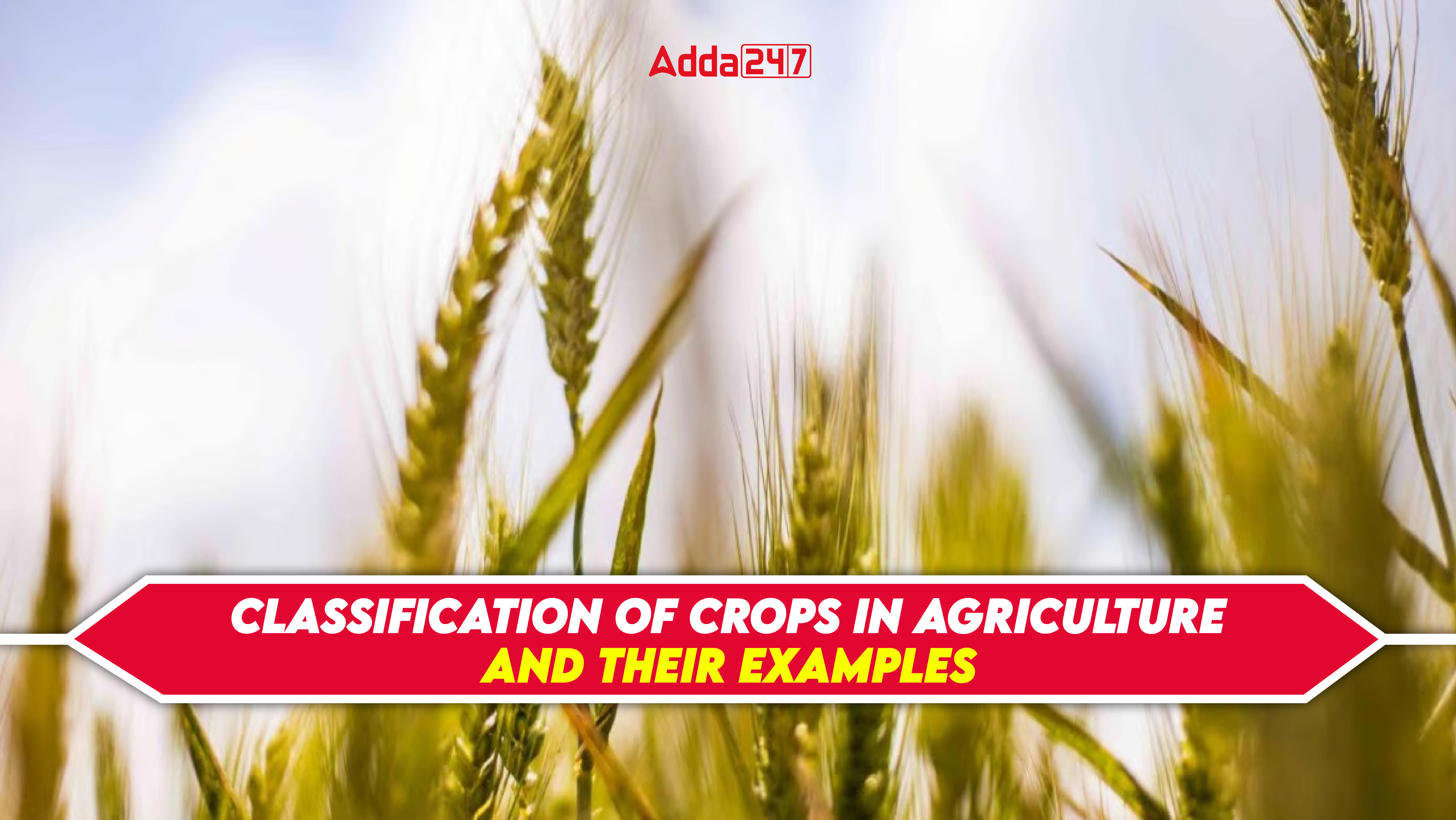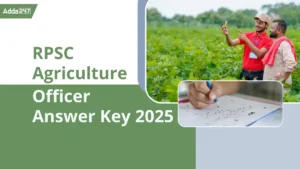Agriculture is the backbone of the Indian economy and has been essential to human societies for centuries. Since ancient times, people worldwide have cultivated and domesticated crops, growing them in fields and farms to benefit both humans and animals. Geographic studies of agriculture focus on areas used for farming, examining factors like growth conditions, distribution, and production trends over time and across different regions.
Crop classification is a vital aspect of agriculture, offering a structured way to understand the diverse range of plants grown for different purposes. This chapter examines the fundamental concepts, practices, and significance of crop classification, highlighting how crops are categorized based on their uses, growth characteristics, and botanical traits. Grasping the principles of crop classification is essential for making informed decisions about crop selection, efficiently managing agricultural practices, and promoting sustainable farming methods.
Crop Types
Depending on the growing season, the crops belong to one of the following types:
| Types Of Crops |
| Kharif |
- Kharif crops are those that are cultivated during the monsoon season. For instance, cotton, millet, and maize.
- At the start of the monsoon season, the seeds are sowed, and at its conclusion, they are harvested.
|
| Rabi |
- The Arabic word “spring” is the meaning of the name “Rabi.”
- Rabi crops are agricultural products that are planted in the winter and harvested in the spring.
- Rabi crops include mustard, wheat, and gram.
- New crop types are created using a variety of agricultural techniques.
- For the seeds of these crops to germinate and mature, they need a warm temperature. But for them to grow, they need a cold temperature.
|
| Zaid |
- These crops are cultivated from March to June, which corresponds to the Kharif and Rabi seasons.
- These plants reach maturity early.
- Zaid crops include watermelon, pumpkin, bitter gourd, and cucumber.
|
Crop Classification Types
Globally, the Food and Agriculture Organization (FAO) of the United Nations establishes the standards for primary crop classifications. Understanding how plants and crops are classified is crucial for grasping their distribution and characteristics, both in India and around the world. Various methods exist for classifying crops, each offering unique insights into their uses and growth patterns.
| Five Criteria Used for Classification |
| Mode of Reproduction |
- Plants classified as sexual or asexual are categorized into two main groups based on the method used
- Those that reproduce sexually develop from seeds or spores following the union of male and female gametes.
- Asexual plants reproduce through any vegetative mechanism, without the union of sexual gametes, or through apomixis. Common examples of this type of plant reproduction are ferns and palms.
|
| Pollination mode |
- Based on this criterion, plants are classified into two groups:
- Naturally self-pollinated crops: In naturally self-pollinated plants, the same floral structure or separate flowers within the same plant produce both pollen and the embryo sac. Rice, the majority of pulses, okra, tobacco, and tomatoes are typical examples.
- Naturally cross-pollinated crops: In these types of crops, pollen is transferred from one flower to another’s stigma in a different plant. Corn and numerous grasses, avocados, grapes, mangoes, and numerous plants with defective or unisexual flowers are typical examples.
|
| Both self- and cross-pollinated crops |
- While certain plants in both types of crops partially self-pollinate, cross-pollination also takes place to variable degrees, such are sorghum and cotton.
|
| Life Span |
- Crops are categorized into annual, biennial, and perennial groups based on Life Span.
- Annual: Annuals are plants that reproduce by seed and survive for only a few weeks or months. They also perish shortly after seedlings are produced. Some examples are cowpeas, corn, and rice.
- Biennials: During their two growing seasons, plants that are biennials accumulate food reserves grow vegetatively in the first season, and produce reproductive parts in the second. Onion, cabbage, carrot, celery, and radish are a few examples.
- Perennials: All trees, shrubs, and many herbaceous plants with subterranean stems (such as corms, rhizomes, or tubers) like bananas and clump-forming grasses are considered perennials. Year after year, perennial plants bear fruit and carry on with their growth, either from a single plant or, in the case of herbaceous plants, from successive regrowth.
|
| Growth Habit |
- Crops are classified as Herbs, Vines, Lianas, Shrubs, and Trees based on their growth habits
|
| Leaf Retention |
- Plants are divided into deciduous and evergreen categories based on leaf retention.
- Evergreen plants: Evergreens are plants that retain their leaves all year round. New flushes constantly replace absentee leaves. Pines, bananas, papayas, palms, and the majority of tropical vegetation are a few examples.
- Deciduous plants: These are plants that lose their leaves for extended periods each year or that naturally shed their leaves. Naturally occurring leaf loss is more noticeable in temperate zone deciduous trees.
|
Crop classification according to Habitat or Ecological Adaptation
Ecology and geography are closely intertwined fields of study. Ecosystems are often examined within their geographical contexts, and plants are classified based on their ecological roles and habitats. This relationship enhances our understanding of how different environments affect plant distribution and behavior.
| The main categories of plants include |
| Plants that are hydrophytic or aquatic |
- These types of plants have evolved to thrive in moist soil or water.
- They can grow fully immersed, partially submerged, or floating.
- Lotus and water lily are two examples
|
| Lithophytic plants |
- These are adapted to grow on rocks or in rocky terrain that lacks humus.
- They obtain nutrients from many sources such as the atmosphere, rain, and decomposing debris that builds up on the rocks.
|
| Epiphytic plants |
- These plants grow above ground on other plants but are not parasitic; instead, they often only need the host plant for physical support and get their nutrition from the air and other sources.
- The families of fern, orchid, and pineapple comprise the majority of epiphytes.
|
| Halophytic species |
- These are found in environments that are overly salinized or very salinized.
- Mangrove vegetation is a prime illustration.
- Different types of coconut, cashew, and tamarind may tolerate different salinities.
|
| Mesophytic plants |
- Mesophytes are terrestrial plants that can grow in conditions that are neither too moist nor too dry; examples of these conditions include corn and the majority of crops farmed for commercial purposes
|
| Parasitic plants |
- These plants develop on another plant and obtain all or part of their nutrition from it.
- Examples- Striga, Orobanche, Loranthus, and Cuscuta
|
| Sporophytic plants |
- Plants that grow in low light or shade.
- Examples of these plants include numerous orchids, black pepper, coffee, gingers, and most ferns and mosses.
|
| Terrestrial plants |
- These plants are found growing on the land.
- Terrestrial plants are used for most crops.
- They are further divided into several categories like mesophytes and halophytes.
- Plants that are xerophytes, or xerophytic, are suited to grow in environments with little or no water.
- Examples are numerous succulents and cacti.
|
Classification of Agriculture
Any plant grown for its usefulness, whether raw or processed, is considered a crop. These plants are intentionally cultivated for various purposes, either directly or indirectly. Crops are generally divided into two main categories based on their cultivation practices and usage: agronomic crops and horticultural crops.
Agronomic crops, often referred to as “field crops,” are typically large-scale, annual herbaceous plants grown extensively. They are classified based on their primary uses and include the following main categories:
| Agronomic classification of plants and crops |
| Food Crops |
- Plants are cultivated mainly to extract any portion that can be consumed by humans or turned into a food product
|
| Cash Crops |
- Cash crops comprise the majority of non-food crops.
- These plants are farmed for their non-food components, which include alcohol, tobacco, fiber, and fodder.
|
| Staple Crops |
- These are crops grown primarily for food.
- They provide a significant amount of the energy and nutrients that humans need when following a typical diet.
- Wheat and millet are two other examples of staple crops.
|
| Cereal Crops |
- These mostly annual, herbaceous plants, which are cultivated for their seeds or grains, are members of the grass family.
|
| Seed Crops |
- Among them are corn, millet, and Legume, often known as seed crops or pulses, which are plants that are high in protein and edible seeds.
- Peas, peanuts, and cowpeas are a few examples
|
| Root and Tuber Crops |
- These plants have altered, enlarged roots or subterranean stems.
- These organs are abundant in carbohydrates and are frequently utilized as staple foods, cattle feed, industrial raw materials (for the production of starch and alcohol, for example), or as a processing ingredient for a variety of food items.
|
| Oilseed Crops |
- These are plants that are cultivated for their seeds, which are a rich source of both industrial and consumable oil. For instance, sunflowers.
|
| Sugar and Sweetener Crops |
- Plants cultivated mainly for the manufacture of sugar or other sweet-tasting goods are known as sugar and sweetener crops.
- Different plant elements, including stems, bulbs, and other subterranean organs, leaves, flowers, fruits, seeds, sap, and resin, are the source of different types of sugar.
- They are referred to as sugar crops.
|
| Beverage Crops |
- These plants are used to make a variety of drinks, such as fruit juices.
- Tea and coffee are two examples
|
| Rubber Crops |
- Rubber crops are a significant plant species that are cultivated for their latex, which is processed to produce the industrial commodity known as rubber
|
| Gum and Latex Crops |
- These are quite common plants. These plants are cultivated for their latex, which is extracted and processed to make chewing gum, inelastic rubber, and many industrial items like adhesives, waterproofing, splints, insulation, pipes, golf balls, surgical tapes, and dental supplies
|
| Dye and Tannin Crops |
- These are unique varieties of plants. These plants are cultivated to provide tannin and coloring agents.
- Tannin is an aromatic, phenolic material that may be extracted from the bark of plants and other plant parts.
- It is used in tanning, medicinal, dyeing, ink production, and other processes.
|
| Fibre Crops |
- Plants are raised for their fiber, which is used to make twine, ropes, textiles, and other items of a similar nature.
- The fiber is taken out of the bark, leaves, or other organs, such as the coconut husk.
|
| Pasture and forage crops |
- These are extremely important plant varieties.
- These plants are farmed or cultivated to provide vegetable feed for animals that graze.
|
| Biofuel Crops |
- A unique kind of crop is biofuel crops.
- Biofuel crops are cultivated to produce fuel that can serve as an alternative or supplement to petroleum-based products.
- Examples are corn, coconuts, sugarcane,
|
Sorting according to the Root System
- Tap root system: The main root penetrates the soil deeply. such as cotton, grape, and tur.
- Crops classified as adventitious or fiber-rooted have shallow, fibrous roots that spread into the earth. For example, rice, wheat, and cereal crops.
Categorization according to Economic Significance
Grown for financial gain:
- Cash crops. Cotton, sugarcane, etc.
- Food crops are raised to provide food grain for the populace as well as livestock feed. As in rice, wheat, and jowar, etc.
Based on the number of cotyledons:
- The classification having a single cotyledon in the seed is known as monocotyledon such as millet and all cereals.
- Dicots, also known as dicotyledonous crops, are seeds that have two cotyledons, such as all pulses and legumes
Crops are cultivated in varying amounts based on factors such as the advancement of farming equipment, farm size, market stability, and financial resources. Understanding crop classifications aids in gathering and analyzing agricultural data by region, helping to organize and comprehend the diverse array of crops worldwide. By categorizing crops based on their uses, growth patterns, and plant types, farmers, researchers, and decision-makers can make more informed choices for sustainable farming and food security.




 RPSC Agriculture Officer Answer Key 2025...
RPSC Agriculture Officer Answer Key 2025...
 RPSC Agriculture Officer Syllabus 2025 a...
RPSC Agriculture Officer Syllabus 2025 a...
 ICAR AIEEA PG Syllabus 2025, Check Subje...
ICAR AIEEA PG Syllabus 2025, Check Subje...


 Adda247 Job portal has complete information about all Sarkari Jobs and Naukri Alerts, its latest recruitment notifications, from all state and national level jobs and their updates.
Adda247 Job portal has complete information about all Sarkari Jobs and Naukri Alerts, its latest recruitment notifications, from all state and national level jobs and their updates.